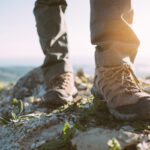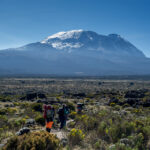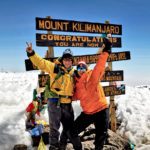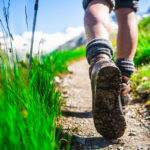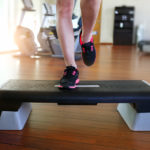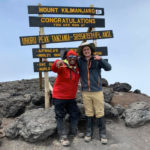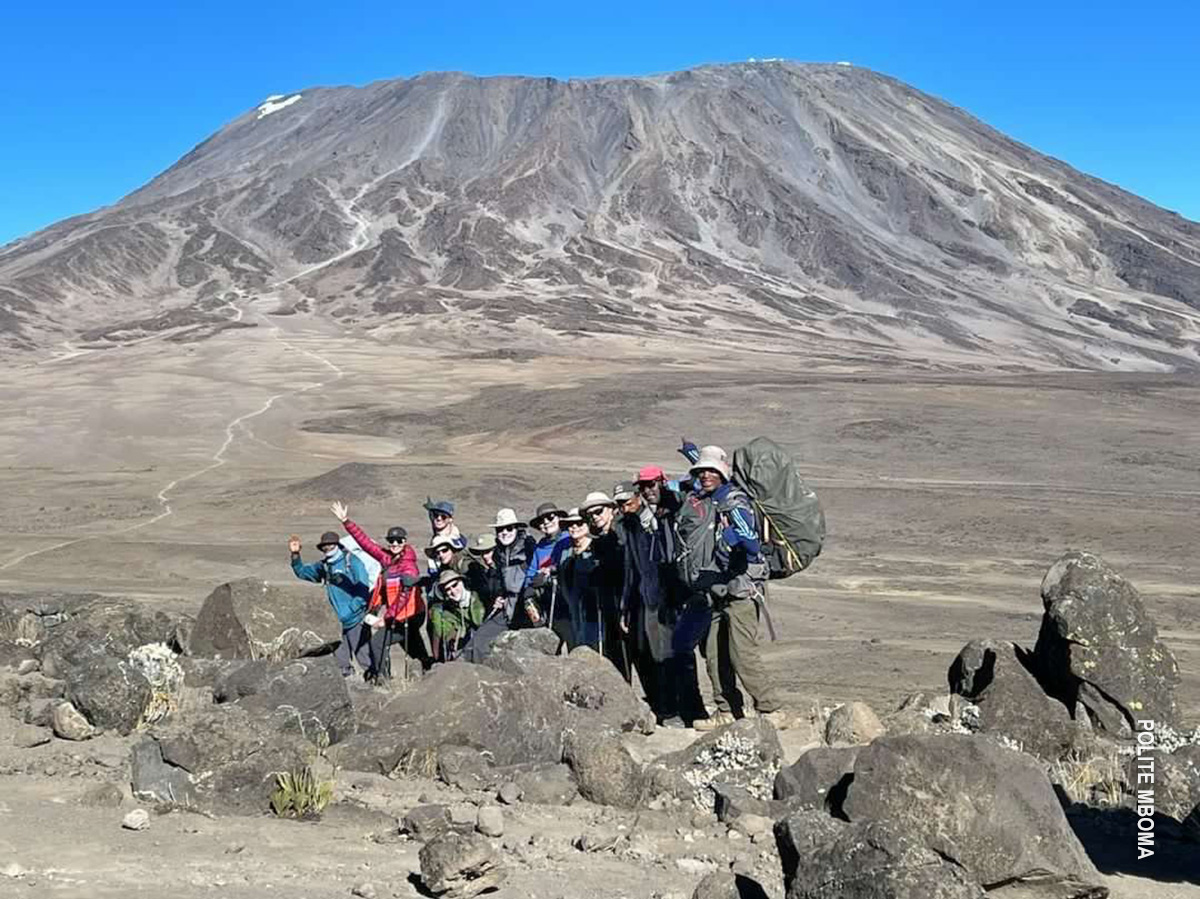 Aside from its stunning sights, gorgeous glaciers, and its unique standing as the world’s tallest freestanding mountain, Mount Kilimanjaro is known for its accessibility when compared to the rest of the Seven Summits. It doesn’t require climbing expertise or gear, meaning there are no ropes, ice picks, harnesses or falls to worry about – all you need is your feet, right? You can simply go for a nice long hike up to the summit, or at least that’s what some people think. While Kilimanjaro may not carry the same risks involved in summiting Everest, it still has an astonishingly high failure rate – 50% of all climbers across the decades have failed in their attempts to reach the top.
Aside from its stunning sights, gorgeous glaciers, and its unique standing as the world’s tallest freestanding mountain, Mount Kilimanjaro is known for its accessibility when compared to the rest of the Seven Summits. It doesn’t require climbing expertise or gear, meaning there are no ropes, ice picks, harnesses or falls to worry about – all you need is your feet, right? You can simply go for a nice long hike up to the summit, or at least that’s what some people think. While Kilimanjaro may not carry the same risks involved in summiting Everest, it still has an astonishingly high failure rate – 50% of all climbers across the decades have failed in their attempts to reach the top.
Yet the most important number, as far as we’re concerned, is 98. That is the percentage of trekkers who have successfully scaled Kilimanjaro with Thomson. We’ve taken every precaution to give you the best possible chance to make it to the summit. From rigorously charted routes, acclimation-centric scheduling and the skill and knowledge of the guides, Thomson has the experience and expertise to help you succeed. Beyond that, there is still plenty that you can do to be prepared. Here are some tips from seasoned Kili trekkers on the Thomson staff to help you reach the mountaintop.
Know the Risks
As Sun Tzu once wrote, “know your enemy.” Though Kilimanjaro shouldn’t be considered your nemesis, it, like a wild bronco, will throw every trick in the book at you as you attempt to scale it. There are any number of specific reasons for a Kilimanjaro failure, but there is one that looms above all – altitude. Kilimanjaro stands 19,431 feet above sea level, and 16,076 feet above its base (nearly twice the height of Mount St. Helens), and with each step up the mountain, you begin to feel just what that elevation does to the human body. Theoretically, you could do the ascent in 14 hours of hiking, but every muscle would be screaming at you to the entire time to slow down and stop, not to mention the risks of altitude sickness (given that you’re not acclimatizing) or any weather that might arise. To extend the horse-training metaphor, knowledge, patience, and the help of experienced hands will help you tame the beast.
Get a Health Check…
 While considering whether to do a Kilimanjaro trek, it’s important to understand where you’re starting from health-wise. A hike of this scale is tremendously difficult on the body, and unexpected complications can emerge while you are making your way to the top. That’s why it is important to get a comprehensive physical from your primary care provider well before your trip. You’ll gain better knowledge of what your baseline health is, tips on how to improve your fitness, and identify any potential concerns. As they often say, an ounce of prevention is worth a pound of cure, and in this case, that 45-minute visit to your doctor may make all the difference when you’re on the mountain.
While considering whether to do a Kilimanjaro trek, it’s important to understand where you’re starting from health-wise. A hike of this scale is tremendously difficult on the body, and unexpected complications can emerge while you are making your way to the top. That’s why it is important to get a comprehensive physical from your primary care provider well before your trip. You’ll gain better knowledge of what your baseline health is, tips on how to improve your fitness, and identify any potential concerns. As they often say, an ounce of prevention is worth a pound of cure, and in this case, that 45-minute visit to your doctor may make all the difference when you’re on the mountain.
… and Consider Talking to a Trainer
Improving your fitness for an intensive trip like a Kilimanjaro summit can seem like an insurmountable challenge, especially if you’re doing it all on your own. Fortunately, help exists in the form of a personal trainer, like the ones at Fit For Trips, who specialize in preparing their clients for activities like this. They’ll consider all of that information your doctor has given you and put together a comprehensive plan to ensure that you’re in fighting shape. Keep in mind: this training is most likely going to take up a decent portion of time before your trip, so it’s best to talk to a trainer earlier in the process rather than later – that way, you can really incorporate your workout routine and spend time getting adjusted to it.
Take the Stairs…
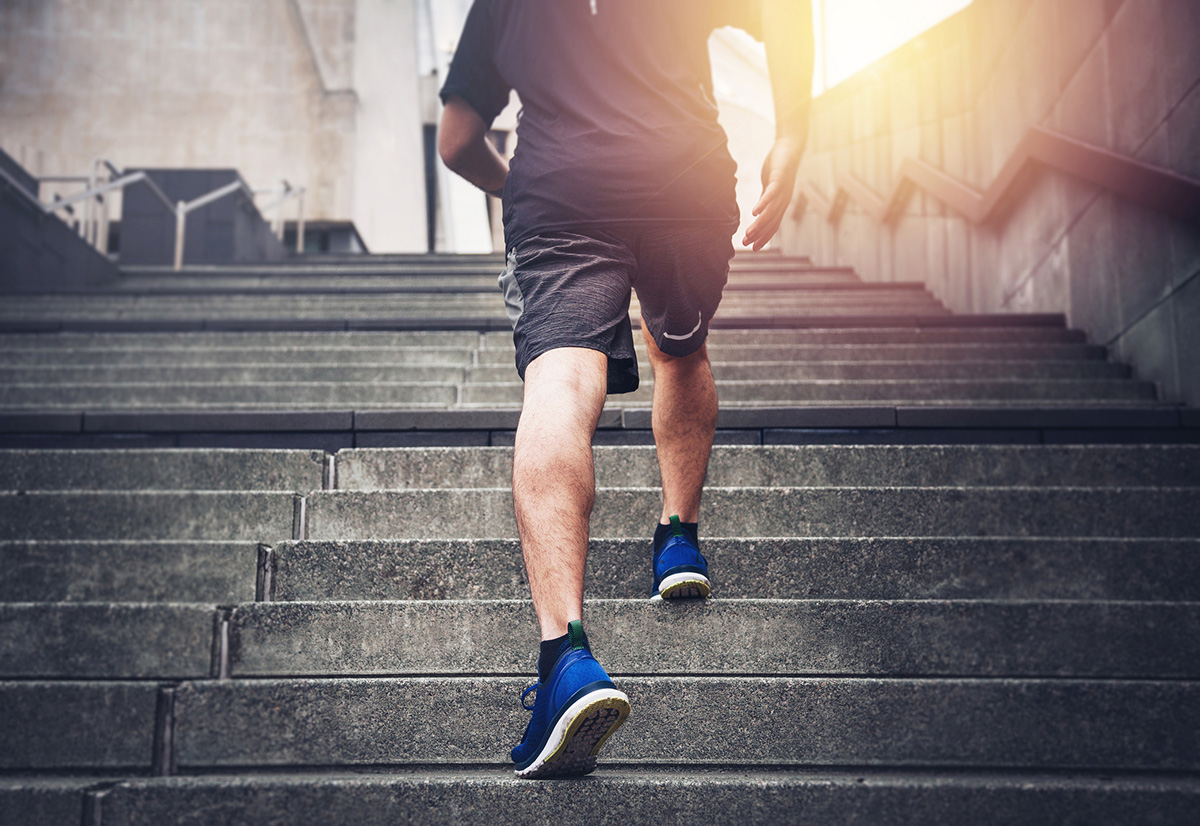
…but Make Sure You Go Down the Stairs, Too
Stair climbers at the gym are great for building strength and upping your cardio game, but it’s the descent that will give you a ton of extra benefits on your climb. Walking down a staircase creates what are called “eccentric movements,” where your muscles have to lengthen in order to, say, decelerate. While you do plenty of eccentric movements every day, going down the stairs is a great way to work those often neglected but extremely important muscles which will be essential for a long trek like this. Take it from Ali: “Descending stairs is an important component as well! Focusing on the eccentric movements and using gravity to strengthen all of those downhill muscles will help save your knees.”
Pack Smartly…
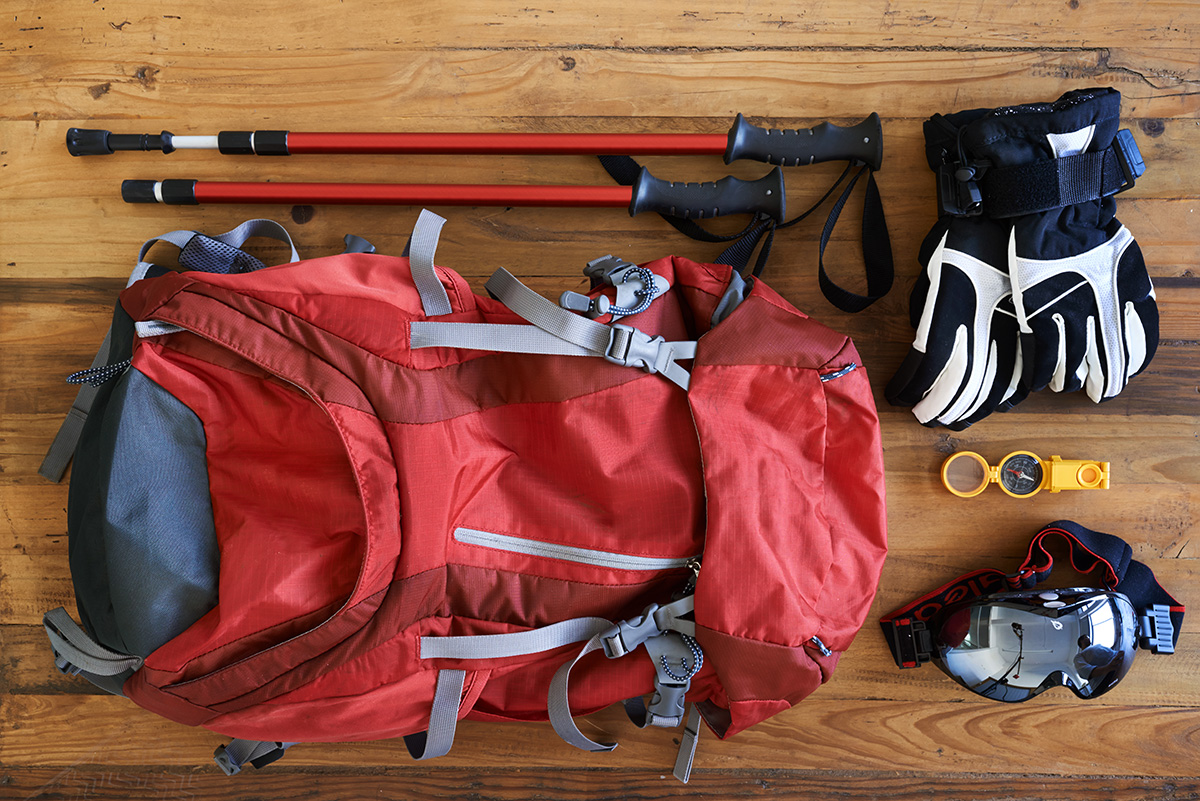 New climbers usually over- or under-pack for their adventure. Those who bring too much are erring on the side of caution without considering weight, and those who bring too little are considering weight at the cost of caution. “Our preparation materials are built off years of experience and feedback from guides and fellow trekkers,” says Carolyn Hardy, Thomson staffer and Kili conqueror. “It is always better to be over-prepared than under-prepared. The weather on Kili can be unpredictable, so it’s best to make sure you have what you need.” She has one extra tip on what to pack: Merino wool socks and base layers. “Merino kills the bacteria in sweat that creates odor, keeps your warm, and wicks moisture away.” Handy stuff for those who would prefer not to smell like a wildebeest. And to make things even easier, we have our own online store, operated in partnership with New Headings, where you can find all the recommended gear you might need for your trek.
New climbers usually over- or under-pack for their adventure. Those who bring too much are erring on the side of caution without considering weight, and those who bring too little are considering weight at the cost of caution. “Our preparation materials are built off years of experience and feedback from guides and fellow trekkers,” says Carolyn Hardy, Thomson staffer and Kili conqueror. “It is always better to be over-prepared than under-prepared. The weather on Kili can be unpredictable, so it’s best to make sure you have what you need.” She has one extra tip on what to pack: Merino wool socks and base layers. “Merino kills the bacteria in sweat that creates odor, keeps your warm, and wicks moisture away.” Handy stuff for those who would prefer not to smell like a wildebeest. And to make things even easier, we have our own online store, operated in partnership with New Headings, where you can find all the recommended gear you might need for your trek.
… and Don’t Forget the Sunscreen
Carolyn doesn’t mince words when talking about sun protection.” “Bring the high SPF. Bring both lotion and a stick. And bring lip balm with SPF.” This is because of the increased UV radiation that comes with altitude: as you get higher up, the atmosphere thins, and the sunlight starts to get particularly harmful. She recommends new climbers apply lotion SPF in the morning, “before you even leave your tent, then keep a stick handy throughout the day for re-applying. It’s helpful while you’re also carrying trekking poles and likely wearing trekking gloves not to be taking things off and reaching into a bag.” Also, she recommends some Vaseline for wind burn. “Don’t forget your hands, too,” she says. “Vaseline should be applied and kept handy before your very windy summit climb!”
Be Sure to Eat…
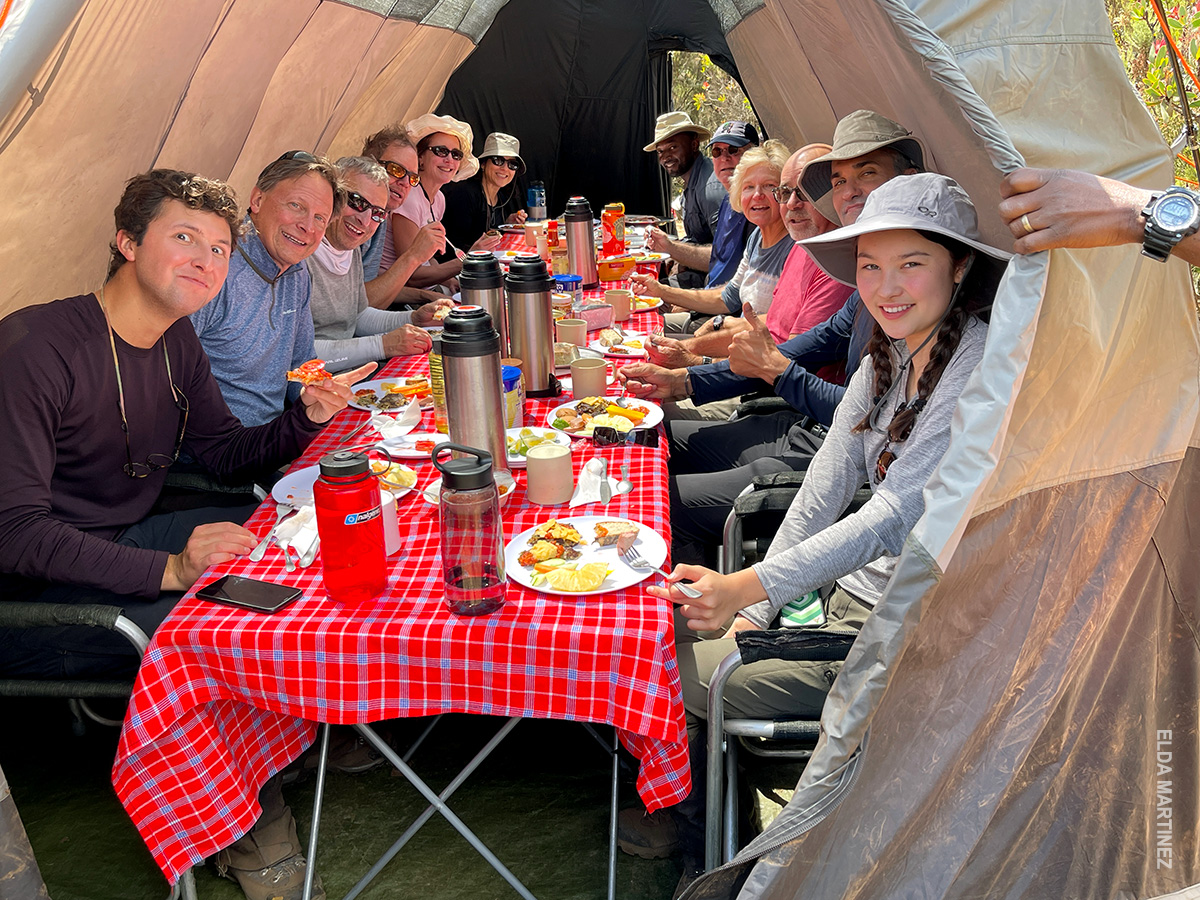 There are a number of reasons why someone might think it’s a good idea not to eat on their trek to the summit – or at least not eat as often or as much as they should. Fatigue can make it hard to chow down, excitement can get the better of them, or they may have any of the maladies listed in the following entry. But what’s important is that you eat, as the amount of energy that you’ll be expending will require a significant amount of fuel. Ina Steinhilber, Thomson President and Kili veteran, recommends that you bring small snacks that are heavy on carbohydrates to give you a quick energy burst when you need it most. “It can be candies or bread or anything you’d like,” she says, “but regardless, a pick-me-up on the trek outside of mealtimes make a big difference.”
There are a number of reasons why someone might think it’s a good idea not to eat on their trek to the summit – or at least not eat as often or as much as they should. Fatigue can make it hard to chow down, excitement can get the better of them, or they may have any of the maladies listed in the following entry. But what’s important is that you eat, as the amount of energy that you’ll be expending will require a significant amount of fuel. Ina Steinhilber, Thomson President and Kili veteran, recommends that you bring small snacks that are heavy on carbohydrates to give you a quick energy burst when you need it most. “It can be candies or bread or anything you’d like,” she says, “but regardless, a pick-me-up on the trek outside of mealtimes make a big difference.”
…But Be Prepared for Stomach Troubles
Stomach troubles are often a big part of why Kilimanjaro has such a high failure rate. Carolyn has a whole list of causes: “It could be just general altitude sickness, or perhaps taking malaria meds on an empty stomach, or even something simple like neglecting to wash your hands before mealtime.” There are several ways you can treat these symptoms, and it’s important to prepare and pack even if you have an iron stomach. Have meds like Pepto Bismol or Imodium with you,” she says. “Continue to drink plenty of water. Have electrolytes you can add to water if needed. Pack some ginger candies. There’s so much you can do to keep your stomach from derailing an otherwise successful climb.”
Keep Your Eyes on the Prize…
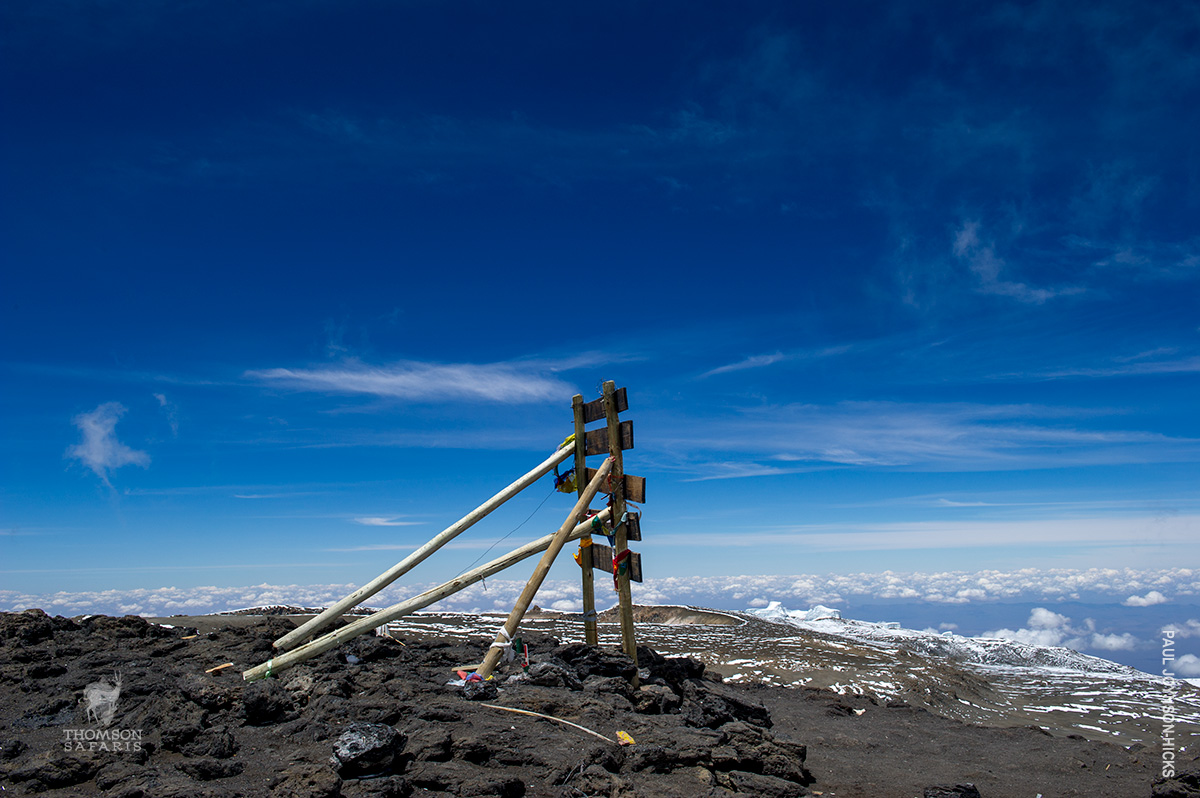 This advice applies to your pre-trip training as well as your experience on the mountain: it is essential to set a goal and to focus on it. “If you are not mentally strong, you’ve only trained half-way,” says Ali. When she trains for a trek, she researches what her final destination looks like. “For Kili, it’s the wooden summit sign, she says.” “Visualizing yourself walking towards the sign and feeling the thrill of success, long before you ever get there, alerts your mind and body that you mean business.” Having the grounding that a goal provides will help sustain you on your way to the top, even as troubles may pop up. “Seeds of doubt are likely to work themselves into your brain during the trek,” she says, “especially when altitude is involved – altitude can be a tricky additive for even the most seasoned hikers – doing the mental work beforehand will allow you to overcome these doubts.”
This advice applies to your pre-trip training as well as your experience on the mountain: it is essential to set a goal and to focus on it. “If you are not mentally strong, you’ve only trained half-way,” says Ali. When she trains for a trek, she researches what her final destination looks like. “For Kili, it’s the wooden summit sign, she says.” “Visualizing yourself walking towards the sign and feeling the thrill of success, long before you ever get there, alerts your mind and body that you mean business.” Having the grounding that a goal provides will help sustain you on your way to the top, even as troubles may pop up. “Seeds of doubt are likely to work themselves into your brain during the trek,” she says, “especially when altitude is involved – altitude can be a tricky additive for even the most seasoned hikers – doing the mental work beforehand will allow you to overcome these doubts.”
…But Don’t Do It Alone
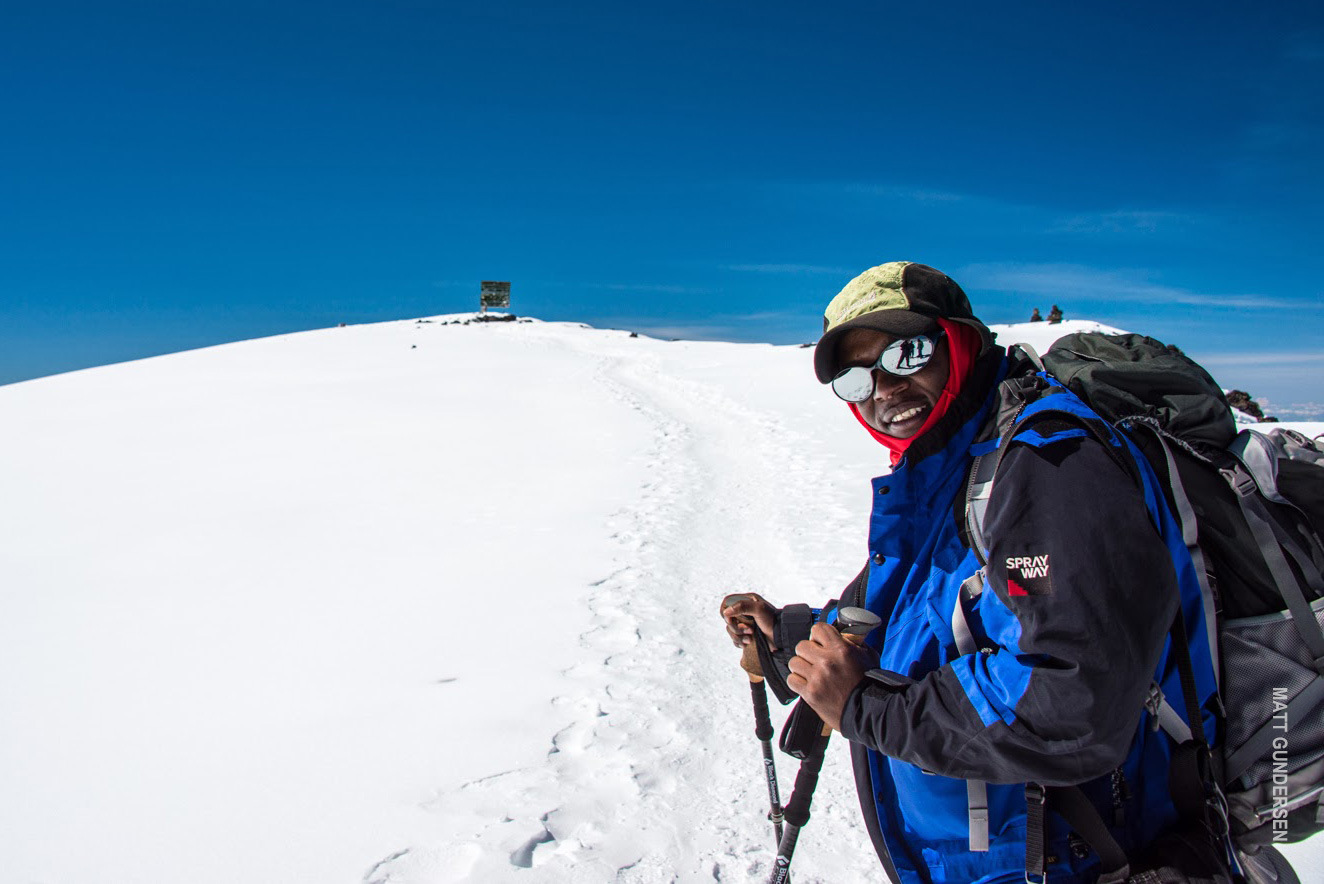 Would-be trekkers often imagine themselves alone at the mountaintop, having conquered the terrain below them, with a wide and beautiful vista as their reward. This is fiction, at least as far as the Seven Summits are concerned. Sir Edmund Hillary would never have made it to summit of Everest if it weren’t for Tenzing Norgay, his sherpa, and if he needed help, it is perfectly reasonable for you to ask for some. This, after all, is why your guides are with you. “There’s no shame in speaking up to your guides,” says Carolyn. “They’ve seen and heard it all before and can make sure you’re getting the care, attention, food, and water you need to regain or retain your strength.” Your guides are professionals who are there to help you succeed, and it is never a sign of weakness to lean on them for support.
Would-be trekkers often imagine themselves alone at the mountaintop, having conquered the terrain below them, with a wide and beautiful vista as their reward. This is fiction, at least as far as the Seven Summits are concerned. Sir Edmund Hillary would never have made it to summit of Everest if it weren’t for Tenzing Norgay, his sherpa, and if he needed help, it is perfectly reasonable for you to ask for some. This, after all, is why your guides are with you. “There’s no shame in speaking up to your guides,” says Carolyn. “They’ve seen and heard it all before and can make sure you’re getting the care, attention, food, and water you need to regain or retain your strength.” Your guides are professionals who are there to help you succeed, and it is never a sign of weakness to lean on them for support.

